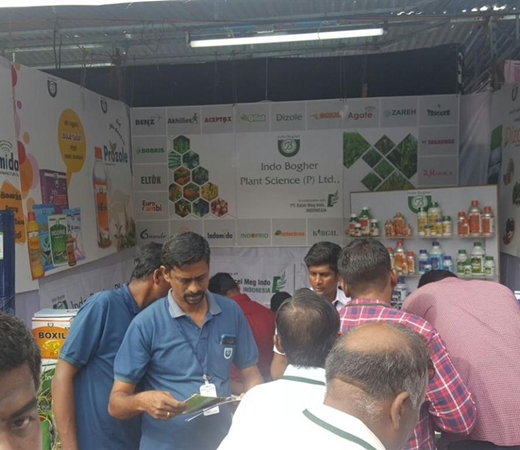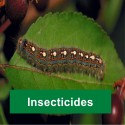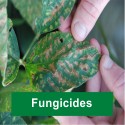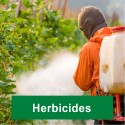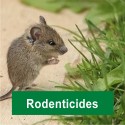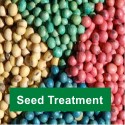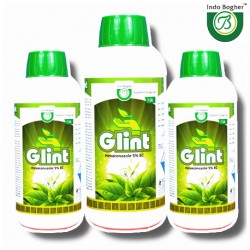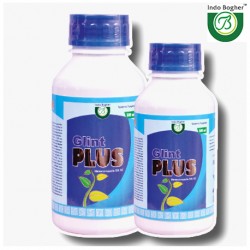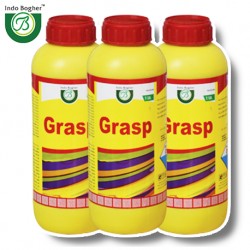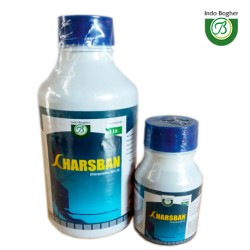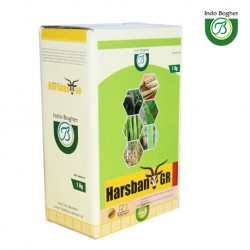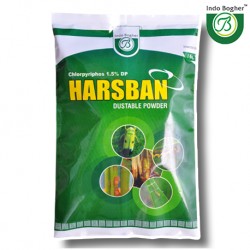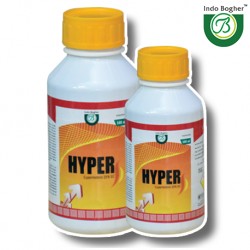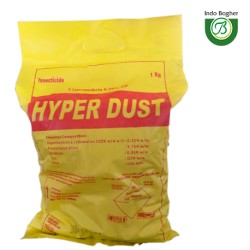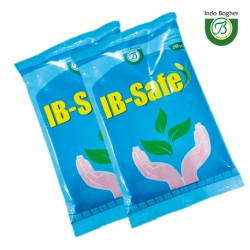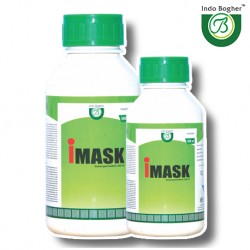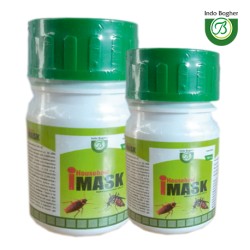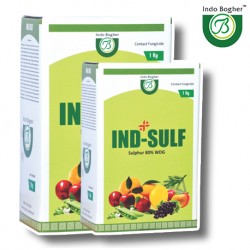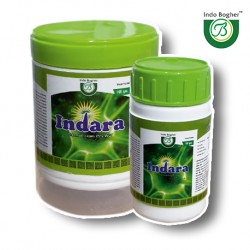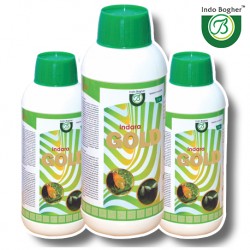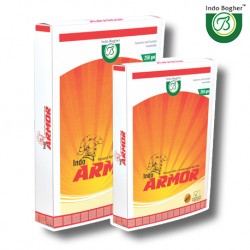Viewed products
-

GLINT PLUS
Technical Name: Hexaconazole 5% SC...
-

FENSTER (ALUMINIUM)
Technical Name: Fenvalerate 20% EC...
Pesticides are substances that are meant to control pests, including weeds.
The term pesticide includes all of the following: herbicide, insecticides (which may include insect growth regulators, termiticides, etc.) nematicide, molluscicide, piscicide, avicide, rodenticide, bactericide, insect repellent, animal repellent, antimicrobial, fungicide...
Pesticides are substances that are meant to control pests, including weeds.
The term pesticide includes all of the following: herbicide, insecticides (which may include insect growth regulators, termiticides, etc.) nematicide, molluscicide, piscicide, avicide, rodenticide, bactericide, insect repellent, animal repellent, antimicrobial, fungicide and disinfectant (antimicrobial).
The most common of these are herbicides which account for approximately 80% of all pesticide use.
Most pesticides are intended to serve as plant protection products (also known as crop protection products), which in general, protect plants from weeds, fungi, or insects.
Pesticides There are 51 products.
Subcategories
-
Insecticides
Insecticides are substances used to kill insects. They include ovicides and larvicides used against insect eggs and larvae, respectively. Insecticides are used in agriculture, medicine, industry and by consumers. Insecticides are claimed to be a major factor behind the increase in the 20th-century's agricultural productivity. Nearly all insecticides have the potential to significantly alter ecosystems; many are toxic to humans and/or animals; some become concentrated as they spread along the food chain.
-
Fungicides
Fungicides are biocidal chemical compounds or biological organisms used to kill parasitic fungi or their spores. A fungistatic inhibits their growth. Fungi can cause serious damage in agriculture, resulting in critical losses of yield, quality, and profit. Fungicides are used both in agriculture and to fight fungal infections in animals. Chemicals used to control oomycetes, which are not fungi, are also referred to as fungicides, as oomycetes use the same mechanisms as fungi to infect plants.
-
Herbicides
Herbicides, also commonly known as weedkillers, are chemical substances used to control unwanted plants. Selective herbicides control specific weed species, while leaving the desired crop relatively unharmed, while non-selective herbicides (sometimes called total weedkillers in commercial products) can be used to clear waste ground, industrial and construction sites, railways and railway embankments as they kill all plant material with which they come into contact. Apart from selective/non-selective, other important distinctions include persistence (also known as residual action: how long the product stays in place and remains active), means of uptake (whether it is absorbed by above-ground foliage only, through the roots, or by other means), and mechanism of action (how it works). Historically, products such as common salt and other metal salts were used as herbicides, however these have gradually fallen out of favor and in some countries a number of these are banned due to their persistence in soil, and toxicity and groundwater contamination concerns. Herbicides have also been used in warfare and conflict.
-
Rodenticides
Rodenticides, colloquially rat poison, are typically non-specific pest control chemicals made and sold for the purpose of killing rodents. Some rodenticides are lethal after one exposure while others require more than one. Rodents are disinclined to gorge on an unknown food (perhaps reflecting an adaptation to their inability to vomit), preferring to sample, wait and observe whether it makes them or other rats sick. This phenomenon of bait shyness or poison shyness is the rationale for poisons that kill only after multiple doses. Besides being directly toxic to the mammals that ingest them, including dogs, cats, and humans, many rodenticides present a secondary poisoning risk to animals that hunt or scavenge the dead corpses of rats.
-
Growth Promoters
Antibiotic use in livestock is the use of antibiotics for any purpose in the husbandry of livestock, which includes treatment when ill (therapeutic), treatment of a batch of animals when at least one is diagnosed as ill (metaphylaxis, similar to the way bacterial meningitis is treated in children), and preventative treatment (prophylaxis). The use of subtherapeutic doses in animal feed and water to promote growth and improve feed efficiency is discouraged by the FDA as part of their Veterinary Feed Directive, which seeks voluntary compliance from drug manufacturers to re-label their antibiotics. Nevertheless this article focuses on the use of antibiotics for growth promotion, which has been banned in Europe since 2006, and on legislation regarding antibiotic use in farm animals in the USA.
-
Seed Treatment
In agriculture and horticulture, seed treatment or seed dressing is a chemical, typically antimicrobial or fungicidal, with which seeds are treated (or "dressed") prior to planting.
Less frequently, insecticides are added. Seed treatments can be an environmentally more friendly way of using pesticides as the amounts used can be very small.
It is usual to add colour to make treated seed less attractive to birds if spilt and easier to see and clean up in the case of an accidental spillage.
-
GLINT
Technical Name: Hexaconazole 5% EC Target Crops: Grapes, Mango, Tea, Rice, Goundnut, Apple and Soyabean Target Diseases: Powdery Mildew, Blister Blight, Blast, Sheath Blight, Tikka Leaf Spot, Sacb and Rust Dosage: 350ml - 400ml / Acre Shelf Life: 24 Months from MFG Date
-
GLINT PLUS
Technical Name: Hexaconazole 5% SC Target Crops: Grapes, Mango and Rice Target Diseases: Powdery Mildew and Sheath Blight Dosage: 200ml - 400ml / Acre Shelf Life: 24 Months from MFG Date
-
GRASP
Technical Name: Glyphosate 41% SL Target Crops: Tea and Non Cropped Areas Target Weeds: Axonopus compressus, Cynodon, Dactylon, Imperata cylindrica, Polygonum perfoliatum, Paspalum scorbiculatum, Arundinella benghalensis, Kalm grass Dosage: 1.5lt / Acre Shelf Life: 24 Months from MFG Date
-
HARSBAN
Technical Name: Chlorpyriphos 20% EC Target Crops: Barley, Paddy, Beans, Gram, Mung, Urd, Sugarcane, Cotton, Ground nut, Brinjal, Musk melon, Tabacco, Apple, Citrus, Cabbage and Onion Target Insects: Aphid, Bollworm, Whitefly, Cut worm, Ground Beetle, Hispa, Leaf Roller, Gall Midge, Stem Borer, Whorl Maggot, Black Citrus and Aphid Dosage: 500 - 1lt /...
-
HARSBAN 10 GR
Technical Name: Chlorpyrofos 10% GR Target Crops: Rice Target Insects: Stem Borer, Leaf Roller and Gali Midge Dosage: 4kg / Acre Shelf Life: 24 Months from MFG Date
-
HARSBAN DP
Technical Name: Chlorpyriphos 1.5% DP Target Crops: Paddy and Bengal Gram Target Insects: Stem borer, Green Leaf Hopper, Brown Plant Hopper, Lafe folder, Gall midge, Grass hopper and Heliothis Dosage: 10 kg / Acre Shelf Life: 24 Months from MFG Date
-
HYPER (PET)
Technical Name: Cypermethrin 25% EC Target Crops: Cotton, Bhendi and Brinjal Target Insects: Bollwarms, Jassids, Thrips and Shoot and Fruit Borer Dosage: 60ml - 80ml / Acre Shelf Life: 24 Months from MFG Date
-
HYPER DUST
Technical Name: Cypermethrin 0.25% DP Target Crops: Brinjal Target Insects: Fruit and Shoot Borer Dosage: To Be Update Shelf Life: 24 Months from MFG Date
-
IB-SAFE
Technical Name: Carbendazim 12% + Mancozeb 63% WP Target Crops: Paddy and Goundnut Target Diseases: Blast and Leaf Spot Dosage: 250gm - 300gm / Acre Shelf Life: 24 Months from MFG Date
-
IMASK Crop
Technical Name: Alphacypermethrin 10% SC Target Crops: Cotton and House Hold Pest Target Insects: Cotton (Bollworm) and House Hold Pest (Adult Mosquitoes, Adult Houseflies, Cockroach) Dosage: 10 - 20 ml / ltr of water Shelf Life: 24 Months from MFG Date
-
IMASK House Hold
Technical Name: Alphacypermethrin 10% SC Target Crops: Cotton and House Hold Pest Target Insects: Bollwarm, Adult Masquitoes, Adult Houseflies and Cockroach Dosage: 10ml - 20ml / Lt of Water Shelf Life: 24 Months from MFG Date
-
IND-SULF
Technical Name: Sulphur 80% WDG Target Crops: Grapes, Mango, Cumin, Cowpea, Guar, Pea and Apple Target Diseases: Powdery Mildew and Scab Dosage: 700gm - 1kg / Acre Shelf Life: 24 Months from MFG Date
-
INDARA
Technical Name: Thiamethoxam 25% WG Target Crops: Mango, Potato, Cotton, Wheat, Tea, Cumin, Tomato, Rice, Citrus, Brinjal, Okra and Mustard Target Insects: Hoppers, Aphids, Jassids, Whitefiles, Mosquito Bug, Helopeltis, Stem Borer, Gall Midge, Leaf Folder, BPH, WBPH, GLH, Thrips and Psylla Dosage: 40gm - 80gm / Acre Shelf Life: 24 Months from MFG Date
-
INDARA GOLD
Technical Name: Thiamethoxam 30% FS Target Crops: Seed Treatment Target Insects: Hoppers, Aphids, Jassids, Whitefiles, Mosquito Bug, Helopeltis, Stem Borer, Gall Midge, Leaf Folder, BPH, WBPH, GLH, Thrips and Psylla Dosage: To Be Update Shelf Life: 24 Months from MFG Date
-
INDO ARMOR
Technical Name: Fipronil 40% + Imidcloprid 40% WG Target Crops: Sugarcane Target Insects: White Grubs (Holotrichia Consanguinea) Dosage: 200gm / Acre Shelf Life: 24 Months from MFG Date


